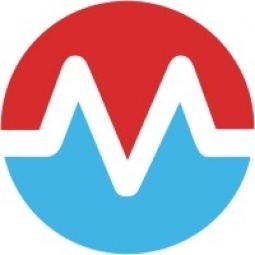Customer Company Size
Large Corporate
Region
- America
Country
- United States
Product
- Morpheus Data
Tech Stack
- VMware vSphere
- Dell and EMC
- Bash
- PowerShell
- MariaDB / mySQL
- Windows
- CentOS
- RHEL
- Ubuntu
- Microsoft Active Directory
- BlueCat
- Splunk
Implementation Scale
- Enterprise-wide Deployment
Impact Metrics
- Productivity Improvements
- Digital Expertise
- Customer Satisfaction
Technology Category
- Infrastructure as a Service (IaaS) - Cloud Computing
- Infrastructure as a Service (IaaS) - Private Cloud
Applicable Industries
- Education
Applicable Functions
- Human Resources
- Business Operation
Use Cases
- Building Automation & Control
- Predictive Maintenance
- Edge Computing & Edge Intelligence
Services
- Cloud Planning, Design & Implementation Services
- System Integration
About The Customer
The customer is a large multi-campus state university with a diverse and open IT operations structure. Each college and administrative unit is in charge of its local IT needs. In addition, a centralized IT services team focuses on offering shared access to certain IT services, including hosted private cloud for dozens of groups and hundreds of end users. The university's IT department had built its own homegrown portal to serve the university. However, due to new IT priorities, the homegrown portal was no longer a key initiative moving forward. This triggered the need to find a new approach for self-service VM hosting and private cloud that was less brittle and easier to maintain.
The Challenge
The large multi-campus state university had a diverse and open IT operations structure, with each college and administrative unit in charge of its local IT needs. A centralized IT services team focused on offering shared access to certain IT services, including hosted private cloud for dozens of groups and hundreds of end users. The university's virtual machine (VM) hosting service had built its own homegrown portal to serve the university. However, due to new IT priorities, the homegrown portal was no longer a key initiative moving forward. This triggered the need to find a new approach for self-service VM hosting and private cloud that was less brittle and easier to maintain. The IT team was ready to get out of the “wrench-turning” business of manually provisioning applications and VMs to university end users, many of whom had non-technical skillsets. These users often needed access to IT services after hours or on weekends and desired a self-service approach to provisioning. It was time to find a way to reduce service ticket volume, centralize hosted VM platforms, and up service delivery.
The Solution
The IT team first connected with Morpheus Data in 2017. Morpheus matched exactly what they were looking for on several fronts. One was value, with Morpheus coming in at the right price point. Speed of integration was another, with Morpheus offering the best integration into vCenter and other out-of-the-box tools. When looking at other available products, the team found that some were too focused on public cloud. Morpheus hybrid cloud management did a better job balancing on-premises and off-premises cloud. Morpheus also provided a better choice of core functions like application lifecycle automation and backup management. Security was a critical factor too. Morpheus provided a dedicated environment for secure data. Government grants require a certain level of security before funds are awarded. Morpheus enabled the IT team to meet the university’s directive to implement a centralized, governed approach to data security controls. Once the decision was made to go with Morpheus, the IT team deployed a proof-of-concept (PoC) in a matter of hours, connecting Morpheus to their VMware environment and leveraging existing Ansible automation. Collaboration and communication with the Morpheus team was fast and easy—using a combination of on-site visits, ticketing, and the Slack platform.
Operational Impact
Quantitative Benefit

Case Study missing?
Start adding your own!
Register with your work email and create a new case study profile for your business.
Related Case Studies.

Case Study
Revolutionizing Medical Training in India: GSL Smart Lab and the LAP Mentor
The GSL SMART Lab, a collective effort of the GSL College of Medicine and the GSL College of Nursing and Health Science, was facing a challenge in providing superior training to healthcare professionals. As clinical medicine was becoming more focused on patient safety and quality of care, the need for medical simulation to bridge the educational gap between the classroom and the clinical environment was becoming increasingly apparent. Dr. Sandeep Ganni, the director of the GSL SMART Lab, envisioned a world-class surgical and medical training center where physicians and healthcare professionals could learn skills through simulation training. He was looking for different simulators for different specialties to provide both basic and advanced simulation training. For laparoscopic surgery, he was interested in a high fidelity simulator that could provide basic surgical and suturing skills training for international accreditation as well as specific hands-on training in complex laparoscopic procedures for practicing physicians in India.

Case Study
IoT platform Enables Safety Solutions for U.S. School Districts
Designed to alert drivers when schoolchildren are present, especially in low-visibility conditions, school-zone flasher signals are typically updated manually at each school. The switching is based on the school calendar and manually changed when an unexpected early dismissal occurs, as in the case of a weather-event altering the normal schedule. The process to reprogram the flashers requires a significant effort by school district personnel to implement due to the large number of warning flashers installed across an entire school district.

Case Study
Implementing Robotic Surgery Training Simulator for Enhanced Surgical Proficiency
Fundacio Puigvert, a leading European medical center specializing in Urology, Nephrology, and Andrology, faced a significant challenge in training its surgical residents. The institution recognized the need for a more standardized and comprehensive training curriculum, particularly in the area of robotic surgery. The challenge was underscored by two independent studies showing that less than 5% of residents in Italian and German residency programs could perform major or complex procedures by the end of their residency. The institution sought to establish a virtual reality simulation lab that would include endourological, laparoscopic, and robotic platforms. However, they needed a simulator that could replicate both the hardware and software of the robotic Da Vinci console used in the operating room, without being connected to the actual physical console. They also required a system that could provide both basic and advanced simulation training, and a metrics system to assess the proficiency of the trainees before they performed surgical procedures in the operating theater.

Case Study
Edinburgh Napier University streamlines long-distance learning with Cisco WebEX
• Geographically dispersed campus made in-person meetings costly and inconvenient.• Distance-learning programs in Malaysia, India, and China required dependable, user-friendly online tools to maximize interaction in collaborative workspaces.• Virtual learning environment required a separate sign-in process, resulting in a significant administrative burden for IT staff and limited adoption of collaboration technology.

Case Study
8x increased productivity with VKS
Before VKS, a teacher would spend a lot of time showing a group of 22 students how to build a set of stairs within a semester of 120 hours. Along with not leaving the teacher much time to provide one-on-one support for each student to properly learn carpentry, it also left a considerable amount of room for error. Key information would be misinterpreted or lost as the class was taught in the typical show-and-tell way.

Case Study
Scalable IoT Empowering GreenFlex's Sustainable Growth
GreenFlex, a company that supports sustainable development, decarbonization, and energy efficiency, faced several challenges in its quest to expand its business. The company needed to deploy a robust and sustainable IoT technology to support its growth. It was crucial for them to monitor and control devices at customer sites in a safe and reliable manner. They also needed to integrate devices across a range of communication protocols and gather and act on data to meet efficiency targets. GreenFlex had previously built IoT capabilities into its digital platform, GreenFlexIQ, to monitor and manage customer sites remotely. However, they soon realized that they needed a new platform to support their ambitions. They needed a platform that could scale to connect more devices for production management and make it easier for the operations team to manage devices in the field.







